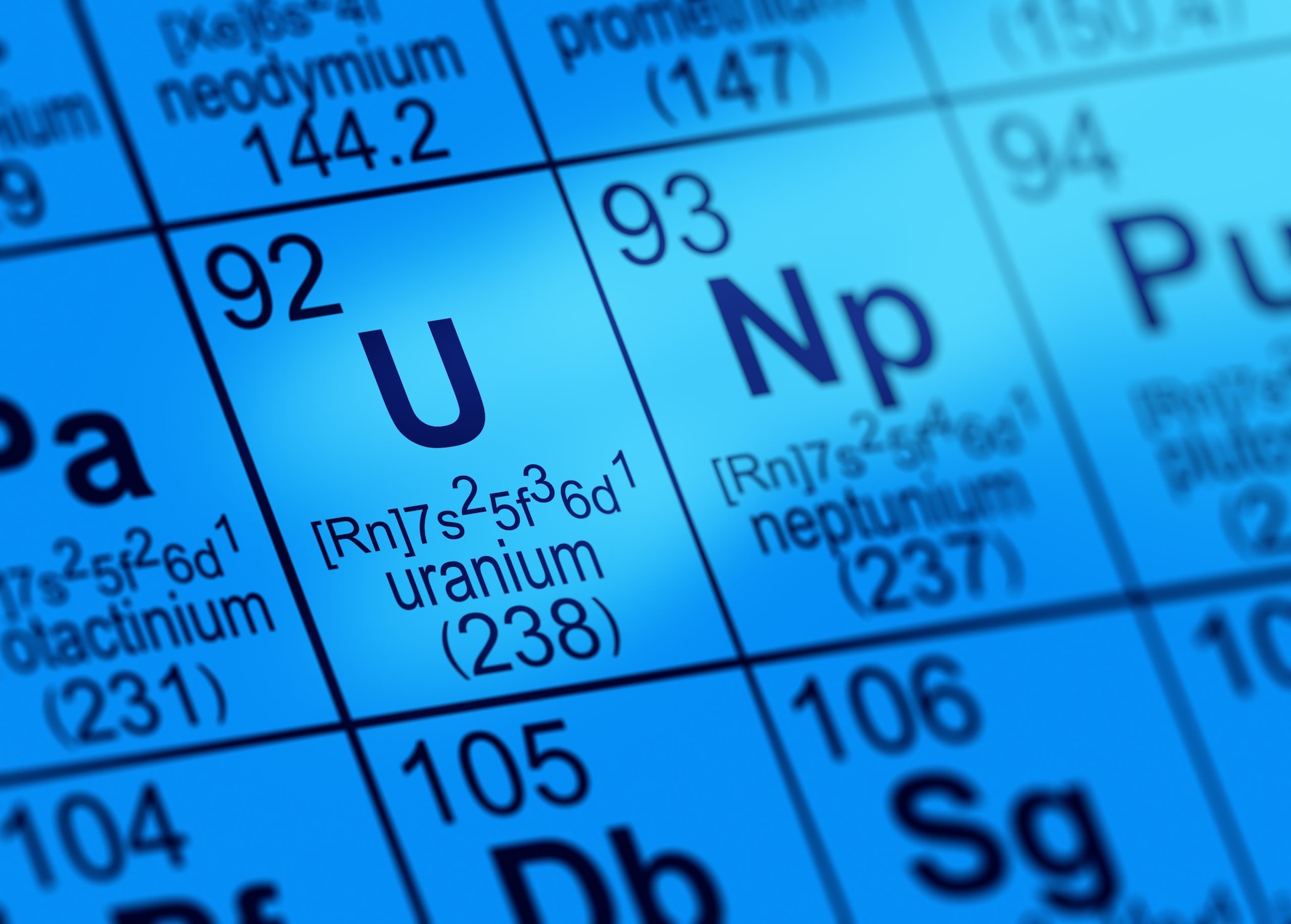At a glance
Uranium (U-235 and U-238) is a heavy metal that is naturally occurring in the environment. It can be found in almost all rock, soil, and water. Ingesting or inhaling large concentrations of uranium can cause severe health effects.

Uranium-235 and uranium-238 properties
Uranium-235 (U-235) Half-life: 700 million years
Uranium-238 (U-238) Half-life: 4.47 billion years
Mode of decay: Alpha particles
Chemical properties: Weakly radioactive, extremely dense metal (65% denser than lead)
Appearance: When it has been refined and enriched, uranium is a silvery-white metal.
Use
Uranium "enriched" into U-235 concentrations can be used as fuel for nuclear power plants and the nuclear reactors that run naval ships and submarines. It also can be used in nuclear weapons.
Depleted uranium (uranium containing mostly U-238) can be used for radiation shielding or as projectiles in armor-piercing weapons.
Origin
U-235 and U-238 occur naturally in nearly all rock, soil, and water. U-238 is the most abundant form in the environment. U-235 can be concentrated in a process called “enrichment,” making it suitable for use in nuclear reactors or weapons.
Form
Uranium is an extremely heavy metal. Enriched uranium can be in the form of small pellets that are packaged in the long tubes used in nuclear reactors.
Risks
Because uranium decays by alpha particles, external exposure to uranium is not as dangerous as exposure to other radioactive elements because the skin will block the alpha particles. Ingestion of high concentrations of uranium, however, can cause severe health effects, such as cancer of the bone or liver. Inhaling large concentrations of uranium can cause lung cancer from the exposure to alpha particles.
Uranium is also a toxic chemical, meaning that ingestion of uranium can cause kidney damage from its chemical properties much sooner than its radioactive properties would cause cancers of the bone or liver.
More information
- Toxicological Profile for Uranium (Agency for Toxic Substances and Disease Registry)
- Uranium Basics (Environmental Protection Agency)
- Frequently Asked Questions (FAQs) About a Radiation Emergency
- What to Do in Radiation Emergencies
- Radiation Dictionary
